Demographics of a country play a very important role in shaping its culture and history. India is no exception. It is a land of highly diverse geography, terrain, and climate. Its ethnic composition is even more diverse, with hundreds of distinct peoples inhabiting it and speaking many different languages.
The subject of this post is the demographics of India, with a focus on the Muslim population and its distribution. This aspect of Indian demographics played a significant role in shaping the modern history of India in the twentieth century. The Muslim population and its aspirations were among the most important issues in the five or six decades leading up to independence. When independence came, it was the distribution of the Muslim population that largely determined the borders of the new states in the subcontinent.
For this analysis, I have used data from the 1941 census, the last census conducted before partition. However, the real challenge was to create a map of India during the British Raj. At that time, India was a complicated mosaic of British-ruled provinces and about 565 princely states. These princely states varied greatly in size. The largest of them was Hyderabad, covering an area of 213,000 square kilometers. But hundreds of them were so small that it was almost impossible to show them even on a large map. To complicate matters further, many of them were divided into several non-contiguous territories. I would not be exaggerating if I said that even the Viceroy himself might not have had a map showing all the political units of India in clear detail.
Fortunately, I found a map published by the National Geographic Society in 1946. Even this map shows fewer than 200 princely states. I have used it as the base for the map provided below. While the British provinces are accurately depicted, the princely states, especially the smaller ones, are only roughly represented. Nevertheless, this map gives a reasonably accurate picture of the distribution of the Muslim population in India in 1941.






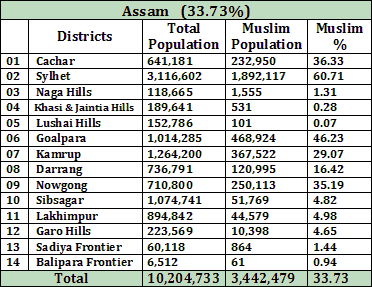








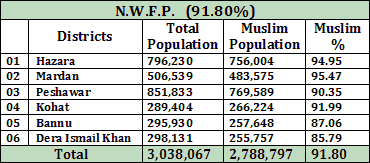

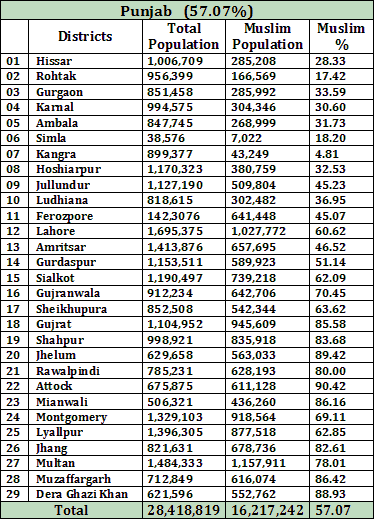
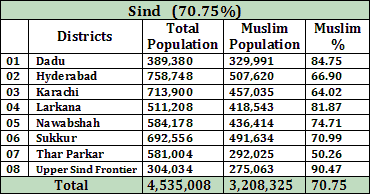
















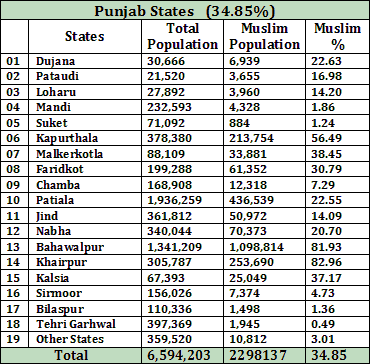









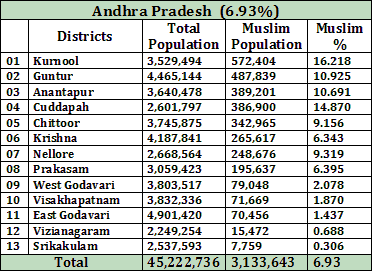








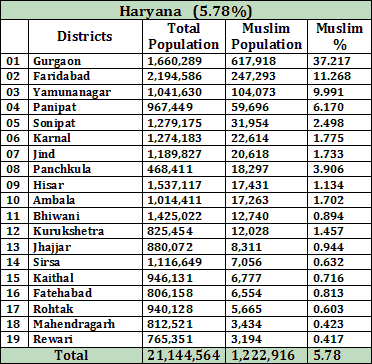



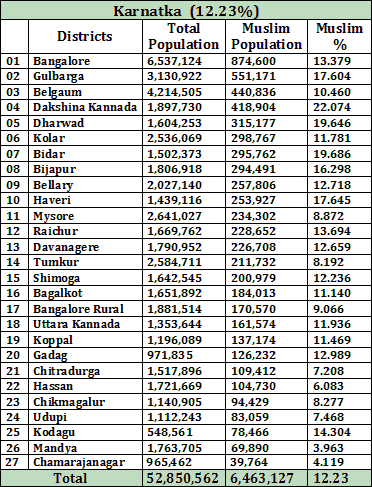




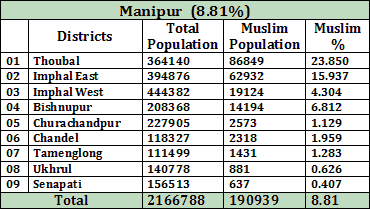















Salam Alaikum, firstly this is a wonderful blog with great research done. I have spent hours studying the maps and charts you have made. I have one small suggestion which is as follows: in the first map for example, instead of having completely different colours representing each percentage of Muslims, you should have it as shades of one colour like green. The darker you get the higher the percentage and lighter is lower percentage.
ReplyDeleteThis is fabulous, painstaking work and you are to be commended.
ReplyDeleteMy father in law and parents lived through both a train massacre, as well as killings on their very doorstep. But of Muslims.
My father-in-law is a staunch Hindu nationalist and fauji who hates Pakistan, but grew up in Sialkot and came over as a refugee. My parents were South Indian Brahmins who lived in Delhi. They were more philosophical about Partition.
This helps greatly in settling silly debates with family and friends about Pakistan having been ethnically cleansed, but not the India side.
It helps to remember, also, that the killings started in late June, and were done by rural Sikhs in East Punjab, trying to scare Muslim neighbors away and take their land.
Thank you for your comments. I wish peace and prosperity to people on both sides of the border. It is my great wish to one day visit Incredible India!
DeleteThere is mistake in 1st table. U mentioned 4% Muslim % population. 9.5 crore of 38 crore is not 4%
DeleteThank you for drawing my attention to this mistake. It is actually 24.08 and I have corrected it. Regards.
DeleteExcellent work
ReplyDeleteYou have not mentioned the percentage of Muslim in present Pakistan district wise in 2014
ReplyDeletegreat blog ...I appreciate your efforts
ReplyDeleteExcellent work Tariq Amir. It will help a lot to answer many questions and debates. Commendable work indeed.
ReplyDeleteThere are 1.8 billion Muslim people worldwide and an estimated 3.45 million Muslims living in the United States. Islam is currently the second largest religion in the world next to Christianity. Despite the fact that there are so many Muslims in the world, in many places there is a lack of understanding truth about muslims people and Islam.
ReplyDeletePlease update India Muslim database States & district cense 2011.Thank you for advanced
ReplyDeleteTariq, I am very impressed with your diligence on this. However, you made one typographical error that I found. For the total population of West Bengal in the 2001 census, you apparently left out a digit, and only listed the total population as approximately 8.000,000 as opposed to the correct figure of approximately 80,000,000. But good work overall - very helpful to understand the demography that led to partition, and helps to explain some of the current issues.
ReplyDeleteDear Mr Greg,
DeleteThank you for your appreciating comments and drawing my attention to a mistake. I shall try to correct it as soon as possible.
Very good effort. This is very informative.
ReplyDeleteDear Tariq this is very informative however a few suggestions:
ReplyDelete1. You haven’t added the figures of Berar in both CP and Berar and in the total figures of British India
2. You haven’t mentioned the figures of FATA (tribal areas of NWFP) in the tables
3. It would have been great if you would have used a colour scheme of different tones of fading green colour to show the districts with Muslim populations of less the 50% rather then Different colours like blue red etc. That would have helped to analyse the Muslim population distribution much better
Still you have done an amazing job . Excellent work!
Dear Tariq this is very informative however a few suggestions:
ReplyDelete1. You haven’t added the figures of Berar in both CP and Berar and in the total figures of British India
2. You haven’t mentioned the figures of FATA (tribal areas of NWFP) in the tables
3. It would have been great if you would have used a colour scheme of different tones of fading green colour to show the districts with Muslim populations of less the 50% rather then Different colours like blue red etc. That would have helped to analyse the Muslim population distribution much better
Still you have done an amazing job . Excellent work!
This comment has been removed by a blog administrator.
ReplyDeleteDear Sir,
ReplyDelete1. I have added the figure for Berar and CP in the totals for India.
2. Actually figures were not given in the census report for 1941.
3. It is a good suggestion. I could use proper colours due to my limited knowledge of graphic desigining.
There is a seperate table for Berar and CP in the province section however the total given for CP and Berar combined in the main table of british India give the figures for only CP. should it be a sum of both CP and Berar figures
ReplyDeleteGreat and detailed article; thanks for writing it up.
ReplyDeleteA couple comments and questions below:
Since this article is analyzing the Muslim population of British India and comparing it with the contemporary population, I believe it would be more prudent to compare it with the present-day India/Pakistan/Bangladesh, rather than just present-day India in order to keep the comparison geographically accurate. Otherwise you're comparing apples to oranges, since present-day India does not include Pakistan and Bangladesh, while British India did.
Additionally, if one was to compare the 1941 and 2011 Muslim population & percentage of all states/districts of India based on present day borders, what would those numbers look like?
Not a bad suggestion. Actually now Pakistan and Bangladesh are so overwhelmingly Muslim, that no district is non Muslim majority. Anyway, I shall try to keep your suggestion in mind for any such article in the future. After all it is 2021 and India must be conducting a new census.
DeleteYeah, to address that first point, it really is sad how much the religious demographics were completely altered in just a few months across regions where the borders were ultimately drawn (Pakistan, Bangladesh and surrounding areas in present-day India). I suppose much of the Indian heartland was able to retain a lot of its Muslim population (especially in comparison to Pakistan) as it was quite densely populated, many lacked the ability to relocate, and was relatively spared the deadly massacres and riots that plagued Punjab and Jammu.
DeleteAnyways, I digress. Thanks for the reply, and once again, great work! Compiling so much data (especially historical data in a region like South Asia) is a monumentous task and I applaud the effort. I'll be looking forward to that potential future article!
Great job! I was wondering if it is possible to have access to the shapefile for this?
ReplyDeleteContact me: tariqamir1015@gmail.com
DeleteCan you make a blogpost for situation if Muslim and Sikh are united in 1947 partition. What happen with Punjab and 2ndly why there is no Muslim majority region or strong Muslim minority in Pakistan India international border region of India
ReplyDeleteMeans west Bengal and asaam has still strong Muslim minority whereas indian Punjab and haryana has very weak Muslim majority what is the reason behind this and and only Kutch and jasailmer has strong Muslim minority which is very less if we compare to Bangladesh bordering region of India means only those region which are non Muslim influence region region before partition are still non Muslim influence region
I shall consider the idea of writing a blog on the effect of Sikhs siding with Pakistan in 1947. Your second question is regarding the the significant Muslim population in the border regions of India with Bangladesh. The basic reason is that no widespread riots were witnessed in Bengal in 1947. On the other hand, in Punjab it was a total ethnic cleansing on both sides.
DeletePlease note that Muslims in Mewat district of Haryana too has 79% population share while figures for Palwal and Yamunanagar districts are appx. 20% and 12% respectively
DeleteCan u make a table of muslim and hindu population from b4 mughal empire to british census of 1901 to 1947 to indian census of 1951 to 2011 in one table..Need to know if hindu and muslim population and how much it retained
ReplyDeleteThat would be very difficult. Because as far as I know modern census operations only started during the British times. Especially from mid 19th century onward, we have reliable data.
ReplyDeleteDiscussing the demographic aspects of India, particularly focusing on the Muslim population and its historical significance, offers valuable insights into the country's complex socio-political landscape. Understanding how demographics shaped India's journey towards independence and influenced the formation of modern states is crucial for grasping the country's diverse history and ongoing societal dynamics.
ReplyDeleteWhen contemplating such profound topics, seeking spiritual guidance can provide deeper perspectives and contemplation. Surah yaseen full pdf, with its profound teachings on faith, resilience, and understanding, offers a pathway to reflect on the complexities of history and society with wisdom and patience.
Well it is actually the said "Spiritual Guidance" that has been mover and shaker behind human efforts towards change in demography
DeleteIt would be interesting to note the areal numbers (or %ages) today hosting these populations in three countries.
ReplyDelete